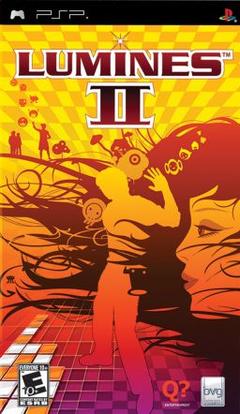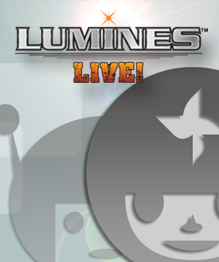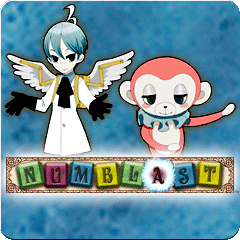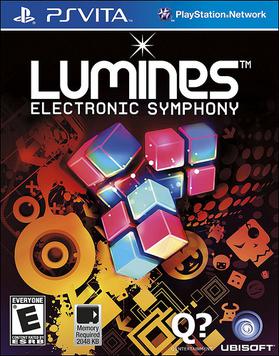
ChuChu Rocket! is an action puzzle game developed by Sonic Team and published by Sega. Released for the Dreamcast in 1999, it was the first game for the system to support online console gaming. Players must place arrows on a board to lead mice into escape rockets while avoiding cats. The game features single-player modes in which a player must save all the mice on a board, and a multiplayer mode in which players battle to collect the most mice.

Dr. Robotnik's Mean Bean Machine is a falling block puzzle game developed by Compile and published by Sega. It was released for the Sega Genesis / Mega Drive in North America and Europe in November 1993, and ported to the Game Gear in 1993 and Master System in 1994.

Puyo Pop Fever is a 2003 puzzle video game developed by Sonic Team and published by Sega. It is the fifth main installment in the Puyo Puyo puzzle game series and the second Puyo Puyo game to be programmed by Sonic Team after Puyo Pop. This was the start of the what can be considered a reboot of the Puyo Puyo franchise, with this entry's plot revolving around Professor Accord losing her flying cane. Sega, which acquired the series' rights from Compile in 1998, published all the Japanese releases of the game, and also published the arcade and GameCube versions internationally. The game was scarcely released internationally, and certain versions were released by other publishers in those areas. Only the arcade, GameCube, and Nintendo DS versions were released in North America. Europe received all three versions plus the PlayStation 2, Xbox, Game Boy Advance, and PlayStation Portable versions. The Dreamcast version, released exclusively in Japan, was the last Dreamcast game developed by Sonic Team, the last first-party title released on the platform, as well as the final first-party title by Sega. was ported from the arcade version. The Dreamcast version is the only console version to use sprites in place of 3D models.

Lumines: Puzzle Fusion is a 2004 puzzle game developed by Q Entertainment and published for the PlayStation Portable by Bandai in Japan and by Ubisoft elsewhere. The objective of the game is to arrange descending two-colored 2×2 blocks to create 2×2 squares of matching color. A vertical line known as the "time line" sweeps across the field, erases completed squares, and awards points. Each stage has a skin that affects the background, block colors, music, and the speed of the time line.

Super Puzzle Fighter II Turbo, released in Japan as Super Puzzle Fighter II X, is a tile-matching puzzle video game released in 1996 for the CP System II (CPS2) arcade board, by Capcom and its Capcom Coin-Op division. The game's title is a play on Super Street Fighter II Turbo, as there were no other Puzzle Fighter games at the time, and the game includes music and interface elements spoofing the Street Fighter Alpha and Darkstalkers games. It was a response to Sega's Puyo Puyo 2 that had been sweeping the Japanese arcade scene.

Kollon (ころん) is a 2003 Arcade puzzle game developed by MagicPot and published by CyberFront. Kollon was later ported to the PlayStation Portable as a launch title in 2004.

Sega Swirl is a puzzle game that was created for the Dreamcast, Personal computer and Palm OS. The game was included in various demo discs released for the Dreamcast, and is free to download and play on the PC.

Lumines II is a 2006 puzzle video game developed by Q Entertainment for the PlayStation Portable (PSP). It was released in November 2006 in Europe and North America by Buena Vista Games, and in February 2007 in Japan by Bandai Namco Games. The objective of the game is to move and rotate 2×2 blocks to form colored squares of the same color. Points are awarded to the player when the Time Line erases the colored squares. It serves as a direct sequel to Lumines: Puzzle Fusion, expanding on previous modes from its predecessor and adding new modes such as Mission mode, Skin Edit mode, and Sequencer. Lumines II utilizes songs from its predecessor and introduces music videos as background skins from Japanese music artists and mainstream American music artists such as New Order, Missy Elliot, and Beck.

Lumines Live! is a 2006 puzzle video game developed by Q Entertainment for the Xbox 360. It was released in Europe in October 2006, in North America in January 2007, and in Japan in March 2007. The objective of the game is to move and rotate 2×2 blocks to form colored squares of the same color. Points are awarded to the player when the Time Line erases the colored squares. Lumines Live! introduces online multiplayer, Xbox Live achievements, and a leaderboard.

Cleopatra Fortune (クレオパトラフォーチュン), released in North America as Cleopatra's Fortune, is a 1995 arcade puzzle game created by Taito in association with Natsume.

Wind and Water: Puzzle Battles is an Independent developed commercial videogame developed by Yuan Works, a company based in Korea. It is a puzzle game for the GP2X and Sega Dreamcast that combines strategy and action. As of January 31, 2011, the game is freely available for Windows.

Planet Puzzle League, known as Puzzle League DS in Europe, and as Panel de Pon DS in Japan, is a video game for the Nintendo DS handheld video game console in the Puzzle League Panel de Pon visual matching puzzle game series. In North America, Planet Puzzle League is part of the Touch! Generations brand; in Japan, Panel de Pon DS is marketed in the general Touch! brand. The publisher for the game is Nintendo, and the developer is Nintendo's second-party developer Intelligent Systems, creator of the original Panel de Pon and its cult classic English-language adaptation Tetris Attack. The game was released in Japan on April 26, 2007 in North America on June 4, 2007, and in Europe on June 29, 2007.

The Next Tetris is a puzzle video game in the Tetris series developed by Blue Planet Software. The game was originally released for the PlayStation by Hasbro Interactive on July 31, 1999. In 2000 a version for the Dreamcast which included online multiplayer called The Next Tetris: On-Line Edition was published by Crave Entertainment in the United States. The Dreamcast version was released in Europe the following year with online functionality removed. A version was also included with Toshiba-manufactured DVD players using the interactive Nuon technology.

Lumines Supernova is a puzzle video game, the fourth main entry in the Lumines series. The game was published and developed by Q Entertainment with original series creator Tetsuya Mizuguchi as the game designer and Katsumi Yokota as director. The game was released on the PlayStation Network on December 18, 2008, for Japan and North America. The objective of the game is to arrange 2×2 blocks varying between two colors into same-colored squares by moving them, rotating, and dropping them in a 16×10 playing field while a timeline sweeps from left to right and clears the completed squares and awards points to the players. It features all of the previous game modes that Lumines Live! implemented with the exception of online multiplayer, as well as an expanded version of the Sequencer from Lumines II and a new mode, DigDown Mode. Lumines Supernova was received positively among reviewers, with some adding it to their Top-rated lists. However, the game was criticized for the lack of online multiplayer that was previously introduced in the series.

Numblast, released in Japan as Qruton, is a downloadable puzzle game for PlayStation 3 and PlayStation Portable. It was developed by Japan Studio and published by Sony Computer Entertainment.

Rush Rush Rally Racing, also known as R4, is an independently developed, commercially released video game developed by Dutch studio Senile Team and published by RedSpotGames. It is a top-down 2D racing game for the Sega Dreamcast and Wii similar to Micro Machines, an easy to pick up and play and hard to master type of racer.

Q Entertainment was a Japanese video game developer. The studio created, produced, and published digital entertainment content across multiple game consoles, PC broadband and mobile units. It was founded on October 10, 2003 by Tetsuya Mizuguchi, formerly of Sega, and Shuji Utsumi, former founding member of Sony Computer Entertainment America, Senior VP of Sega Enterprises, Ltd., and head of Disney Asia.

Lumines: Electronic Symphony is a game developed by Q Entertainment and published by Ubisoft for the PlayStation Vita.
Lumines is a puzzle video game series developed by Q Entertainment. The core objective of the games is to survive by rotating and aligning 2×2 blocks varying between two colors to form 2×2 squares of a single color which will be erased when the Time Line passes over them. The game is lost when the blocks reach the top of the playing field.

Lumines: Puzzle & Music is a puzzle game for iOS and Android, developed and published by Mobcast with Resonair as co-developer. It was the second smartphone game in the Lumines series after Lumines: Touch Fusion. The objective is to rotate and drop 2×2 blocks to create squares of the same color as a vertical line sweeps across the board to erase completed squares and award points to the player. It was released in Japan, Australia, and New Zealand on July 19, 2016, and later worldwide on September 1, 2016.





















